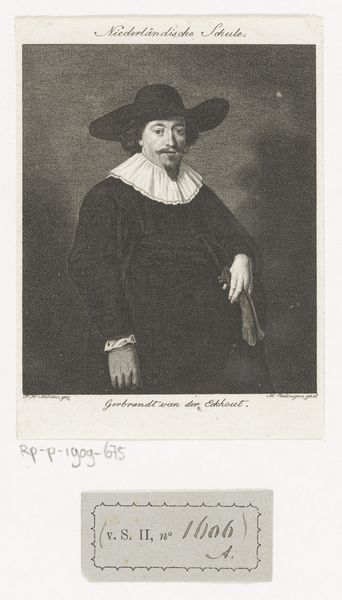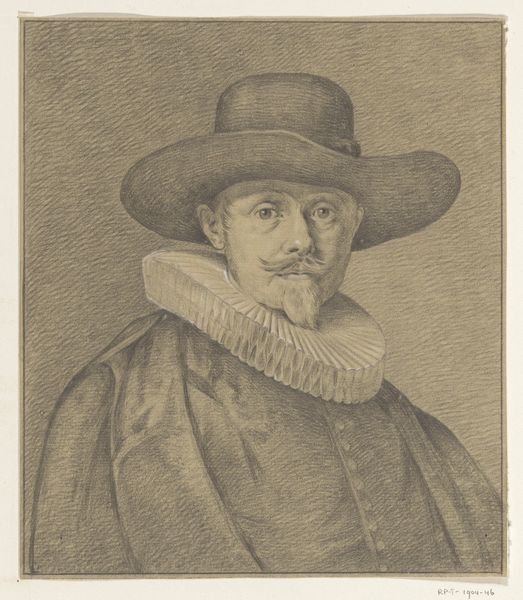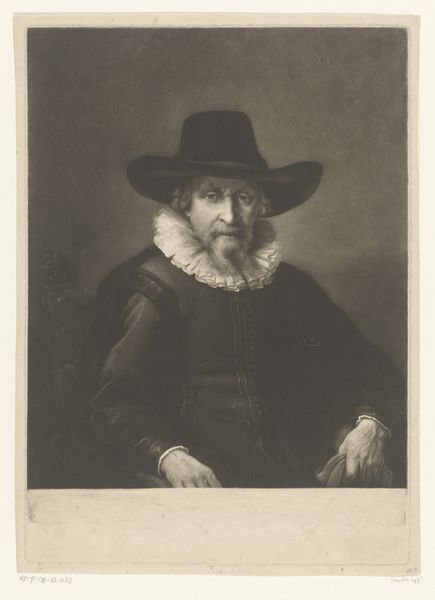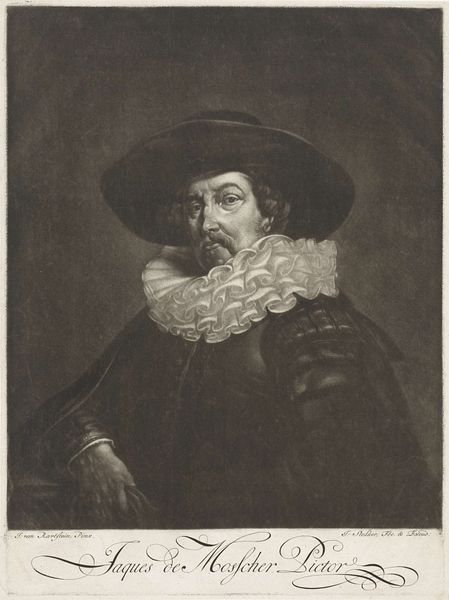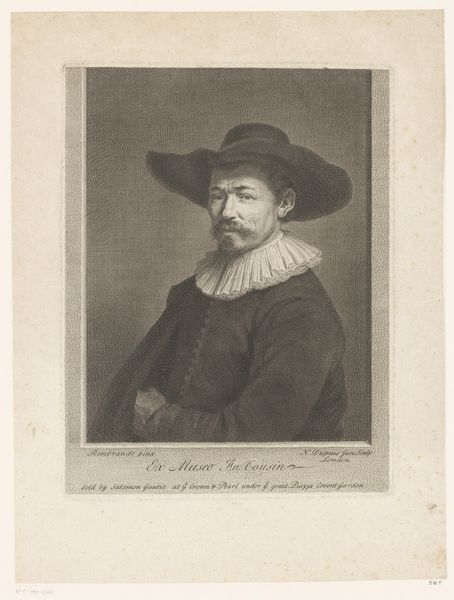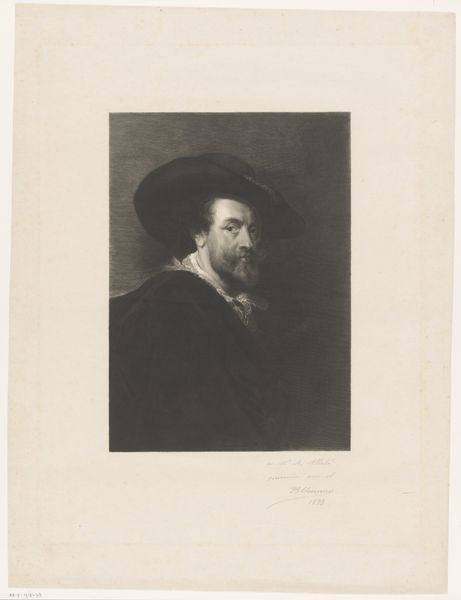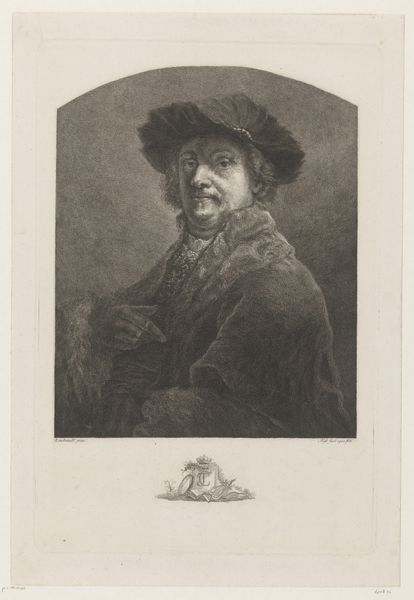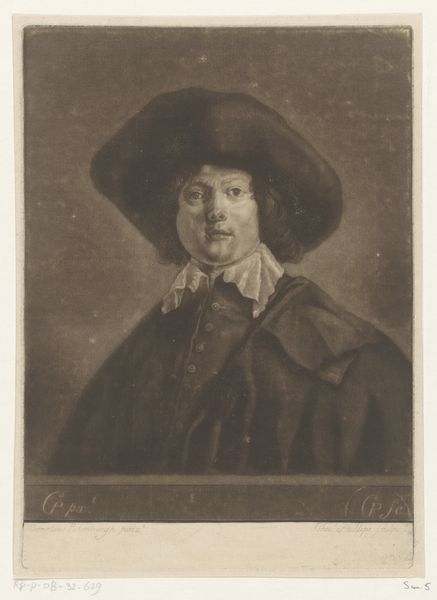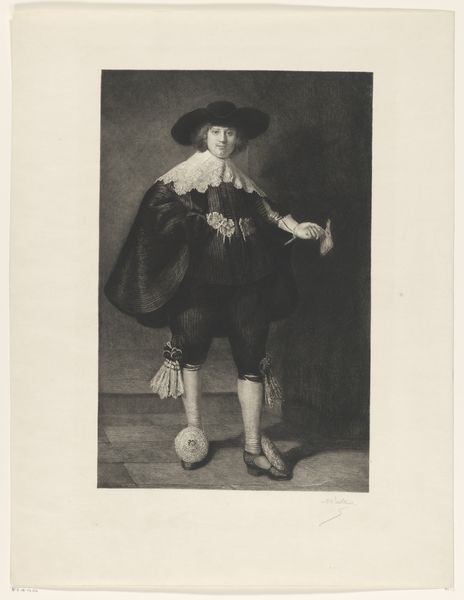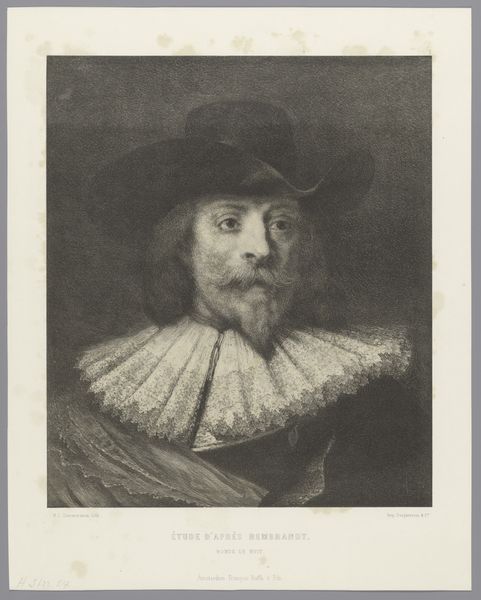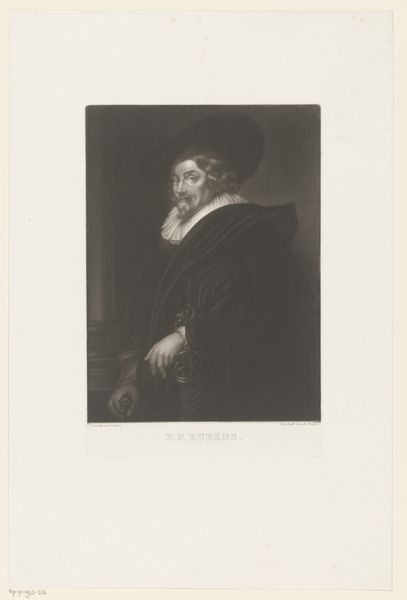
print, etching
#
portrait
#
print photography
#
dutch-golden-age
# print
#
etching
#
historical photography
#
genre-painting
#
realism
Dimensions: height 656 mm, width 480 mm
Copyright: Rijks Museum: Open Domain
Curator: Before us is Charles Albert Waltner’s etching from approximately 1884, a piece titled "Portret van Herman Doomer." It’s a printed work. What catches your eye initially? Editor: The tonal range. It's subtle, isn’t it? The soft gradations in the grays give such depth to the texture, especially in the rendering of the face. The texture looks incredibly tactile despite being an etching. Curator: Indeed. This portrait carries with it the symbolic weight of its subject, Herman Doomer, who was an art dealer famed as Rembrandt's cabinet maker. Waltner channels the spirit of the Dutch Golden Age, nodding to the tradition of capturing likeness to confer status and importance. The wide-brimmed hat, the pleated ruff collar... they all speak to the man's status and identity. Editor: It does echo a particular aesthetic, doesn't it? The controlled cross-hatching and the strategic use of light and shadow to define form are hallmarks of classic portraiture, almost mimicking the techniques of Rembrandt himself. I’d venture to suggest that his hand gesture signals his artistic vision, he literally makes his reality with his hand. Curator: Precisely! Doomer looks almost like a figure lifted straight out of a Rembrandt painting—Waltner really captures that air of thoughtful dignity characteristic of that era's portraits. Editor: There's something inherently psychological, too. Doomer’s gaze is direct, confident... perhaps a hint of pride? All relayed with sophisticated, almost painterly use of lines. Curator: Right. Waltner isn’t simply copying an image; he’s tapping into our collective memory of what a prosperous Dutch merchant *should* look like. The piece works on many levels: historical, social, and aesthetic, confirming a shared cultural iconography of affluence and intellect. Editor: Absolutely. After closer observation of form, tone, and execution I’m beginning to wonder what might have led Waltner to create an image, decades later, emulating older artworks, and how images transmit cultural ideas. A simple glance evolves into complex contemplation... fascinating. Curator: Exactly. This engraving transports viewers back through artistic traditions while prompting them to reflect on cultural memory and visual echoes, what they invoke and conjure up across decades, or even centuries.
Comments
No comments
Be the first to comment and join the conversation on the ultimate creative platform.


